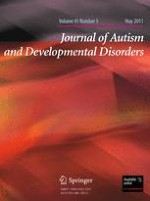01-05-2011 | Original Paper
Is It a Bird? Is It a Plane? Category Use in Problem-solving in Children with Autism Spectrum Disorders
Gepubliceerd in: Journal of Autism and Developmental Disorders | Uitgave 5/2011
Log in om toegang te krijgenAbstract
Fourteen children with autism spectrum disorders (ASD) and fourteen age-matched typically-developing (TD) controls were tested on an adapted version of the Twenty Questions Task (Mosher and Hornsby in Studies in cognitive growth. Wiley, New York, pp 86–102, 1966) to examine effects of content, executive and verbal IQ factors on category use in problem-solving (age range 8–17). Across conditions participants with ASD asked questions that focussed on smaller categories than controls. Specific group differences were observed in the handling of abstract content and response to additional working memory demands. In addition, post hoc regression analysis indicated that VIQ predicted performance in ASD but not TD participants. The implications for theories of category processing in autism are discussed.
